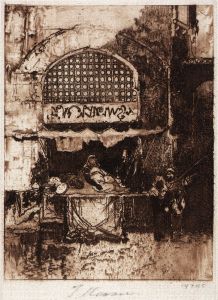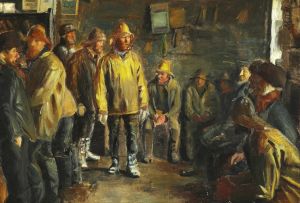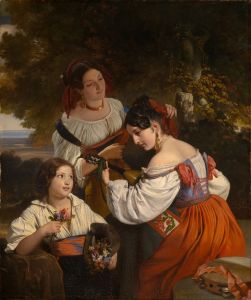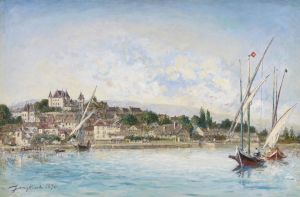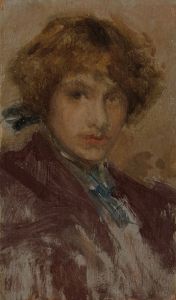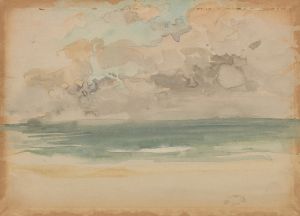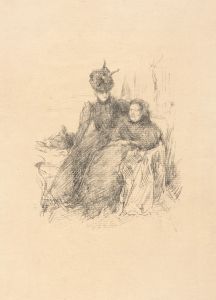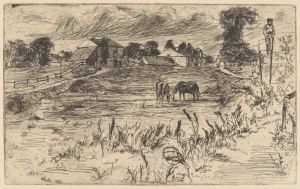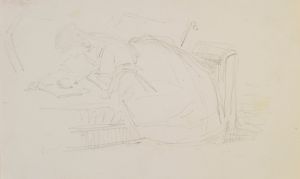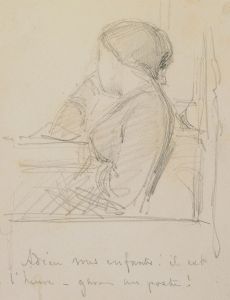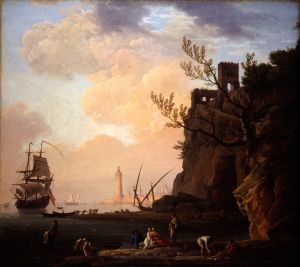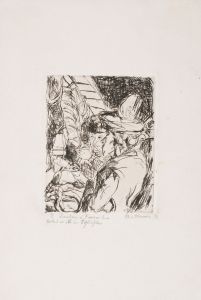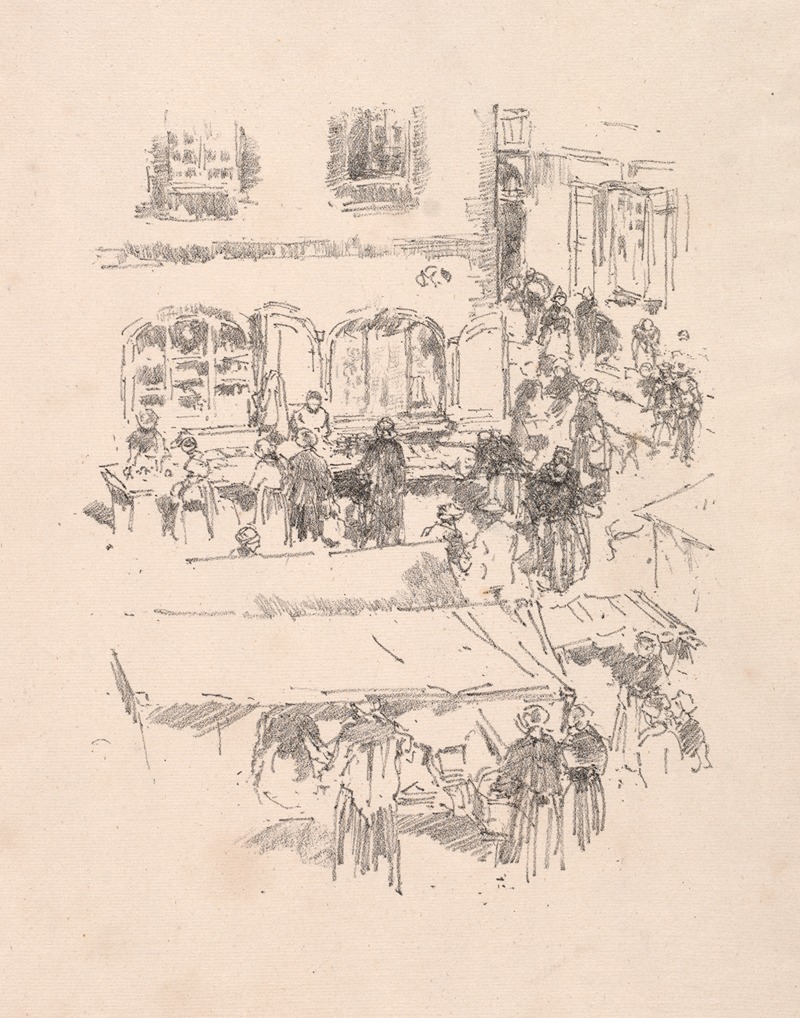
The Market Place, Vitre
A hand-painted replica of James Abbott McNeill Whistler’s masterpiece The Market Place, Vitre, meticulously crafted by professional artists to capture the true essence of the original. Each piece is created with museum-quality canvas and rare mineral pigments, carefully painted by experienced artists with delicate brushstrokes and rich, layered colors to perfectly recreate the texture of the original artwork. Unlike machine-printed reproductions, this hand-painted version brings the painting to life, infused with the artist’s emotions and skill in every stroke. Whether for personal collection or home decoration, it instantly elevates the artistic atmosphere of any space.
James Abbott McNeill Whistler was an American artist known for his paintings, etchings, and lithographs. He was a leading figure in the Aesthetic Movement, which emphasized the visual and sensual qualities of art and design over practical or narrative considerations. One of his works, "The Market Place, Vitré," is an etching that reflects his interest in capturing the essence of a place through his art.
"The Market Place, Vitré" was created during Whistler's travels in France. Vitré is a commune in the Ille-et-Vilaine department in Brittany, northwestern France. Known for its medieval architecture and historical significance, Vitré provided Whistler with a rich tapestry of visual elements to explore. The etching captures the bustling atmosphere of a market scene, with its intricate details and careful composition.
Whistler's etching technique was highly refined, and he was known for his ability to convey mood and atmosphere through his use of line and shading. In "The Market Place, Vitré," Whistler employs a delicate interplay of light and shadow to bring the scene to life. The etching showcases his skill in rendering architectural details and human figures with precision and subtlety.
Whistler's approach to etching was influenced by his admiration for the works of earlier masters such as Rembrandt and the French Barbizon School. He often sought to capture the fleeting effects of light and atmosphere, a quality evident in "The Market Place, Vitré." The work is part of a series of etchings Whistler created during his travels in France, which collectively demonstrate his keen observational skills and his ability to translate the character of a place onto paper.
Throughout his career, Whistler was known for his distinctive style and his commitment to the idea that art should stand on its own, without the need for narrative or moral justification. This philosophy is reflected in "The Market Place, Vitré," where the focus is on the aesthetic qualities of the scene rather than any specific story or message.
"The Market Place, Vitré" is an example of Whistler's broader body of work, which includes not only etchings but also paintings and other forms of art. His contributions to the art world were significant, and his influence can be seen in the works of later artists who embraced the principles of the Aesthetic Movement.
Today, Whistler's etchings, including "The Market Place, Vitré," are appreciated for their technical mastery and their ability to evoke a sense of place and time. They continue to be studied and admired by art historians and enthusiasts alike, serving as a testament to Whistler's enduring legacy in the world of art.





